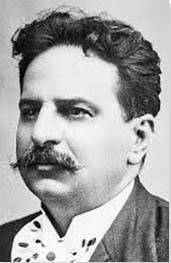Summary of Joaquín Clausell
Clausell is Mexico's pre-eminent Impressionists. He paintings covered the sweep of his country's rich landscape - from its national parks and canals to its oceans - which he made his own through his inclination toward bold experimentations with color. He used impressionist strokes and (increasingly) rich color contrasts but, unlike the French Impressionists (from whom he took his initial inspiration), he was not interested in representing the day-to-day activities of modern Mexican life. Indeed, human figures rarely feature in his works at all. His status as a landscapist gives the viewer no hint at all of his dual status as a lawyer and outspoken political activist (which saw him jailed on more than one occasion). However, he did leave behind a striking fresco on his studio walls that tell us that he engaged privately with themes carrying political, personal, and symbolic overtones.
Accomplishments
- Although he did not start to paint seriously until his mid-30s, and did not, in fact, consider himself a professional painter at all (refusing, for the most part, to actively promote his work), Clausell is estimated that he left behind some 400 paintings. These have come to define Mexican Impressionism and, later, Post-Impressionism and have allowed Clausell to jockey with his predecessor, José María Velasco, for the position of Mexico's greatest modern landscapist.
- Clausell preferred to occupy the fringes of the contemporary Mexican art scene and shied away from publicity and self-promotion. His impressionistic style, which saw him paint on canvas, wood, and cardboard with a brush and/or spatula, did overlap with the beginnings of the famous Mexican Muralist movement and Clausell shared with them their socio-political concerns. But his political activism never carried over into his art which was inspired by the natural beauty of Tlalpan, the lakes of Iztacalco and Xochimilco, and Mexico's Pacific Coast.
- In Clausell's later works he would often opt for clashing color contrasts to translate the splendor of Mexico's topography. These pieces are in fact closer in style to the Post-Impressionists and the Fauves than the Impressionists. Audacious works such as the undated Gushing Fountains (Blue Forest), show the influence of Cézanne and Van Gogh (his admiration of the latter confirmed in a still life sunflower arrangement he called A Tribute to Vincent Van Gogh) in the way Clausell used saturated hues and impasto brushwork to effectively reinvent Mexican landscape painting.
- While they largely escaped the attention of the public and the critics due to their restricted accessibility, his studio walls (referred to by some historians today as Clausell's "Sistine Chapel") were adorned with paintings broaching a wide sweep of topics and styles including, portraits of family members and prominent artists, nudes, animals, and religious iconography. The mural shows an artist whose penchant for experimentation went far beyond his search for the most arresting color contrasts.
The Life of Joaquín Clausell
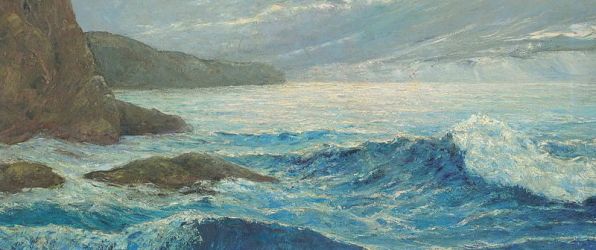
Recognized as the most prominent Mexican Impressionist artist, and as one of the precursors to modern art in Mexico, Clausell's paintings are often compared to those of José María Velasco, with renowned Mexican art historian Xavier Moyssen calling him "the best among his contemporaries at seascapes". The famous muralist Diego Rivera went further, describing Clausell as "the best of Mexico's landscape artists [and] a painter poet".
Important Art by Joaquín Clausell
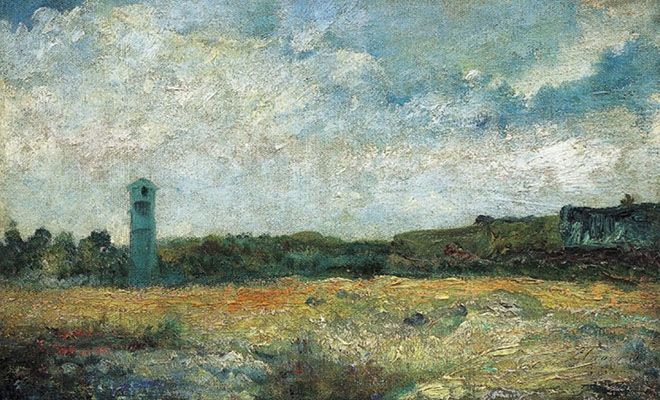
Paisaje (Landscape)
Probably one of the artworks that most directly shows the influence of European Impressionism on Clausell, Paisaje features an open landscape with a thickly applied, fluid brushwork. In the foreground, a textured field covers the view in multiple tones of green, yellow, blue, and orange. The work on the grasslands is reminiscent of the style of Pissarro and Sisley. Against the fluid shapes of the field, a distant blue tower breaks with rhythm and composition of the background that is covered by vegetation in darker sap green and blue hues. The sky above plays with different tones of cobalt blue, white, and yellow and shows the same fluid brushstroke of the grassland. The artwork's tactile application of paint adds to the alluring effect on the eye.
This artwork clearly demonstrates Clausell's dominion of the visual language of Impressionism and how he was able to translate its qualities through the Mexican landscape. He shows a mastery of color to conjure a vision of the subtle and transitory changes light causes on the view in front of him. This is an idealized vision of nature that strips the landscape of any sign of modernity. Clausell leaves only a tower as a testament to human existence, but its inclusion breaks with an otherwise balanced composition. The brushstroke and color choices are emblematic of the great French Impressionists, but in time the artist will develop a more personal and experimental approach to Impressionism by which he will become better known. Historian Jim Lane writes, Clausell "was the conduit through which his country first discovered and came to love Impressionism [...] the style and palette are impressionist. The content is purely Mexican".
Oil on canvas - National Museum of Art, Mexico City
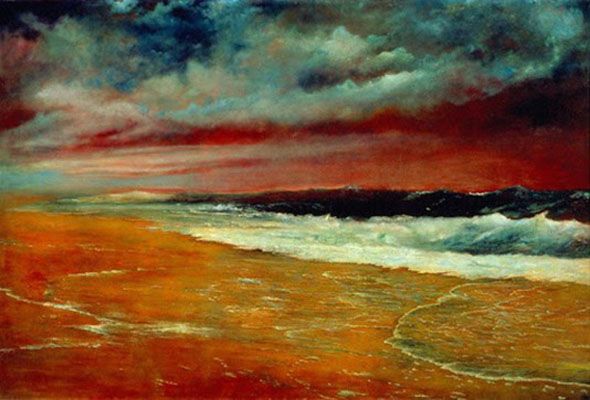
Atradecer en el mar, la ola Roja (Sunset at the sea, the red wave)
In Atardecer en el mar (Sunset at the sea) Clausell represents a pulsating seascape. He offers the viewer an angled (side on) view of the waves hitting the shore. The waves come from a dark foreboding ocean under enormous angry clouds. The artist chooses red and orange hues to depict the undulating waves closing in and for the sky above. This choice contrasts with the dark blue tones of the sea and the bluish-gray clouds in the background. The color choices confer the scene's menace and its sublime quality.
Here Clausell places the viewers' feet on the wet floor of the rolling and ebbing tide. He manipulates the light and color to convey the weight of the storm closing in on the shore during the late afternoon. The artwork drifts away from the traditional distant panoramic landscape scenes, common in depictions by other Mexican artists, and instead gives us a personal and intimate scene that translates as an intensely powerful visual image. The representation of seascapes, and other bodies of water, will become an important theme in Clausell's painting. However, Atardecer en el mar remains perhaps his most extreme representations of the sea.
Historian Mark A. Castro writes that, "the focus of the Mexican art world shifted to native and nationalist art traditions in the first half of the twentieth century" adding that Mexican art was "focused on the unique aspects of Mexican national identity and on the promotion of a collective agenda of progress and social justice". While it is true that Clausell did not engage with these themes overtly (like the famous Mexican Muralists had done) Clausell was praised by curators and critics for his ability "to co-opt impressionism's 'rebellious techniques' for the purpose of shaping the direction of Mexican painting".
Oil on canvas - National Museum of Art, Mexico City
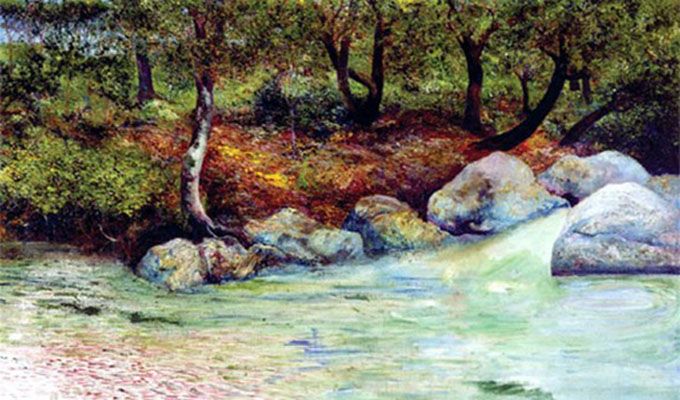
Paisaje con Bosque y Río (Landscape with forest and River)
In this work, Clausell gives us an evocative natural setting. There are two main planes to this painting: the green and red waters of a river in the foreground; a wooded forest over red sandstone in the background. The work shows the short and impasto brushwork that characterized Clausell's painting during his later (second) period. The choice of color is intriguing with his contrasts of green, ocher and blue tones chosen, not to create a realistic representation, but rather to represent the artist's own feelings towards his natural surroundings.
Considered one of his most representative forest scenes, it, like other Clausell landscapes, was painted en plein air and in the Impressionistic idiom. But the artist does not faithfully recreate the style he learned from the likes of Monet or Pissarro, but adapts his style rather to capture more of the unique essence of the Mexican landscape. In this painting, one finds the artist's well-known pastel-like brushstrokes, and his vibrant and experimental color palette, in a combination that creates a landscape of an intense chromatism that in fact reinterprets the traditional Impressionist approach.
Oil on canvas - Soumaya Museum, Mexico City
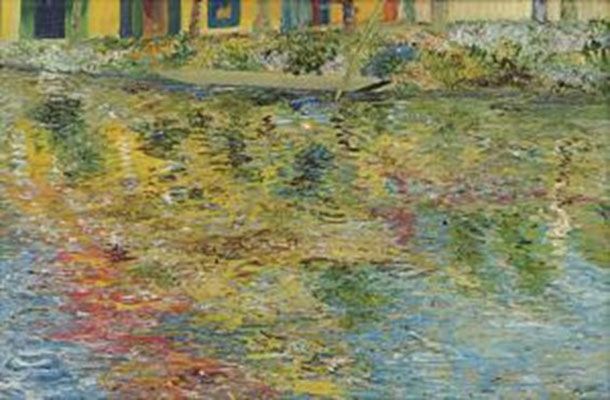
Canal de Xochimilco (Xochimilco Canal)
The Xochimilco Canal is one of Mexico City's most iconic settings, and a favorite tourist destination. This painting is once again organized around two main planes. The foreground takes up most of the canvas and depicts the waters of the Xochimilco in a colorful and vibrant palette of yellow, green, blue, and red. The color tones reflected in the water seem to emanate from a set of buildings situated on the banks of the canal. Clausell decides to give the viewer just a glimpse of the lakeside, showing some of its rich vegetation along with a trajinera boat and a small portion of the lower walls of the buildings. The whole painting is executed in short impasto brushstrokes.
The Xochimilco canals hold a historical and an ecological significance for Mexicans. The name Xochimilco comes from the indigenous Nahuatl language, meaning "flower field", since the canal was used to grow crops in the pre-Hispanic era. Furthermore, the canal (which was declared a World Heritage Site in 1987) is home to various endemic and endangered species such as the ahuejote (a type of willow tree) and the axolotl (a type of amphibian). In this artwork the artist offers a representation of Xochimilco that subverts the more typical representations of the scene that focus on the colorful trajineras peacefully moving along the canal (much like pictures of gondolas feature in popular views of Venice's canals). Clausell lowers the viewer's angle to focus on the colors reflected in the body of water. He chooses to focus predominantly on the water rather than present a full vista, thereby creating a more idiosyncratic representation of a location very firmly rooted in the Mexican national consciousness.
Oil on canvas - Private Collection, Mexico City
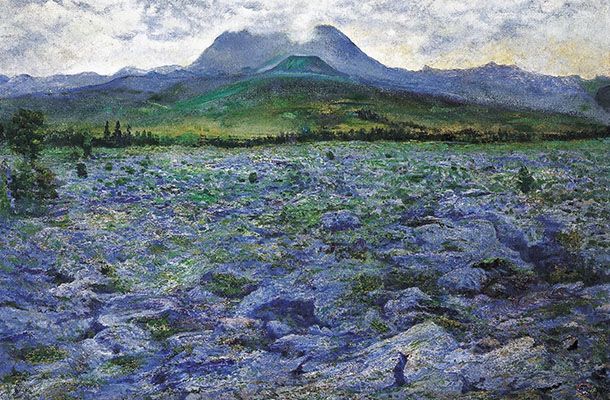
El Pedregal (The Scree)
In El Pedregal (The Scree) Clausell depicts a mountainous Mexican landscape. The foreground is covered by rocky terrain with tactile qualities achieved by the impasto brushstrokes. The rocks are represented using vibrant blue and purple hues that transmit the iciness of the terrain. Set against this rugged topography, a green field and a set of mountains open and magnify before the eyes of the viewer. The main mountain is rendered in an emerald-green that contrasts with the lesser blue mountains that surround it and the white clouds behind them. The striking landscape is devoid of any sign of civilization or modernity.
One can see the clear influence of Cézanne and Pissarro in this piece. Indeed, the composition is similar to Mont Saint-Victoire (1904-06) by Cézanne (it depicting an open volcanic panorama set against green fields). Clausell's artwork also evokes the serene approach of Pissarro in the absence of all civilization and in the tactile surface of the canvas. Like the Impressionists, Clausell seeks to capture the changes in color and light gradation as the day passes by; something that in the opinion of historian Héctor Pérea the artist excelled at in his art. At the same time, however, Clausell makes the work his own through his signature use of non-naturalistic color and the impasto technique that gives the viewer a visual and tactile representation of a remote area of their country.
Oil on canvas - National Museum of Art, Mexico City
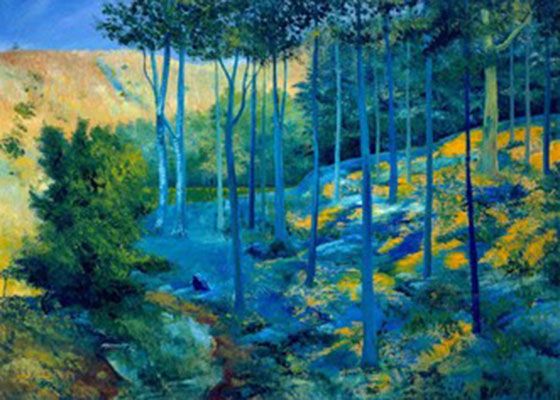
Fuentes brotantes (Bosque Azul) (Gushing Fountains (Blue Forest))
In what remains perhaps one of the most striking artworks by Clausell, Fuentes Brotantes (Bosque Azul) depicts a national park in Tlalpan, Mexico City. In this forest scene, a theme for which the artist became well known, Clausell chooses a stunning, yet unnaturalistic, blue to depict the tributary that makes its way through the floor of the forest. The use of blue is not limited to the water, however, with the same tone applied to the trunks of most of the trees. For the grass, Clausell chooses a contrasting combination of blue, yellow, and green. The brushstroke is typical of his other works, but here there is less consideration of perspective.
This landscape it visually closer to the style of Post-Impressionism than to Impressionism. This painting is, indeed, one of Clausell's most experimental works. It shows the influence of Van Gogh and Cézanne in his use of saturated hues and brushwork that recreates the texture and outlines of the landscape. Clausell also employs a flattening of the pictorial plane that differs from most of his other work. This painting has a sister work with the same name but which offers a softer approach to the coloring, showing that the chromatic choices the artist made for this piece were highly considered.
Oil on canvas - National Museum of Art, Mexico City
The Tower of 1000 Windows
In 1898, soon after his return from exile in Paris, Clausell married Angela Cervantes, a daughter of the Count of Santiago de Calimaya (Jose Juan Cervantes). The couple took up residency in one of the Count's "palaces". Angela was ambivalent towards her husband's painting and his bohemian social circle, but she allowed for two loft rooms to be converted into a bespoke studio space for her husband. Although the building has been converted for different purposes after Clausell's death (including a modern suburban tenement block), in the 1960s, Mexico City's Federal District government expropriated the former palace and turned it into the Museum of Mexico City. The building, which was restored by architect Pedro Ramírez Vázquez, opened to the public in 1964. The four studio walls, still covered with Clausell's mural, became the centrepiece of the museum's permanent collection, and are to this day one of its most important attractions. It was the museum that gave the mural the title: The Tower of 1000 Windows.
Clausell created many images - including sketches, color tests and portraits - over the years, with images reaching from ceiling to floor. The Historian Xavier Moyssen writes, "Clausell painted the four walls of his studio with very unusual images, apparently with no unitary thread and at no particular date. Everything that went through his mind seemed to invade these walls: some images are exotic, emanating from the Far East; there are wild beasts semi-hidden in undergrowth. He was particularly obsessed with women nude bathing or dressed luxuriously. He also painted portraits of young ladies. There are landscapes, of course: in a small series of paintings worked as such on the walls. He even included religion, with several images of Jesus Christ and symbolic representations of Adam and Eve". Collectively, the images offer a unique insight into the artist's unconscious and leaves us to wonder, perhaps, why his entire output was so dedicated to the Mexican landscape.
Estudio de Joaquin Clausell, Museo de la Ciudad de México (Museum of Mexico City)
Biography of Joaquín Clausell
Childhood
An only child, Joaquín Quirico Marcelino Clausell Traconis was born in 1866 in Campeche. The region is well known for both its picturesque bay area setting on the Gulf of Mexico and its colonial buildings and city walls (which initially served as protection from pirates during Spanish colonization). Joaquín was the only son of José Clausell, an immigrant shipbuilder and businessman from Catalonia (now part of north-eastern Spain), and Marcelina Traconis, who was native to the area. The family was reasonably prosperous and sent Joaquín to a private school (Instituto Campechano) but the sudden death of his father (and resultant loss of family income) disrupted his high school education.
From an early age, Clausell showed his restless and rebellious character. As an altar boy, for instance, he wore a red (rather than white) garment for his carnival costume which saw him banned from any future religious ceremonies. At the age of 16, he was expelled from the state of Campeche altogether after publicly confronting the State Governor, Joaquín Baranda, about his policies. His outburst occasioned Clausell's move to Mexico City. With very little money, he worked various jobs including cleaning equipment in a pharmacy.
Clausell briefly attended the National School of Engineers before realizing that his vocation was for law. He mixed with liberal student groups who were, like him, vocal in their opposition to the government, and with their support, he was able to smuggle books out of the National School of Law library. He was eventually caught out, but the Dean of the School of Jurisprudence was moved by Clausell's desire to learn and offered him a scholarship which he took up in 1892. Clausell still needed to work odd jobs to make ends meet and he even pawned a prized medal he won for debating to buy food.
Admission to law school did little to temper Clausell's outspoken political views. He organized a student rally to honor the life of the exiled liberal president, Sebastián Lerdo de Tejada, when his body was repatriated. Clausell interrupted the funeral which led to an arrest for sedition and several months in Belém prison. He managed to complete all his law classes, but his criminal record prevented him (temporarily) from taking the Bar exam and receiving his degree.
On his release, Clausell began work as a journalist and cartoonist for newspapers and periodicals - including titles such as, La Campaña Electoral, El Hijo del Ahuizote, el Diario del Hogar and El Universal - which openly criticized the government of Porfirio Diaz. He then started an "anti-reelection party", and co-founded the oppositional newspaper, El Demócrata (The Democrat). In 1893 a series of fictionalized accounts of government backed army campaigns against the indigenous Tarahumara people saw him imprisoned once more. He was held in the Belem Prison for several months but fled on the day of his trial. Clausell escaped to New Orleans, then New York, before arriving in Paris in 1896. He stayed in touch with friends and family through letters which he signed using the pseudonym, James Chamley. Some of his letters were sent to an old girlfriend even though he knew she was now engaged to be married.
Early Training and Work
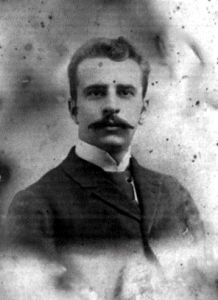
In Paris, Clausell's early childhood interest in painting was piqued following a visit to an exhibition of the Impressionist, Camille Pissarro. He made friends with Pissarro and Claude Monet who actively encouraged his interest in Impressionist painting. Some accounts suggest he also became close friends with the novelist and political activist, Emile Zola. Clausell visited Pissarro several times in his Paris studio and received an invitation to visit him in his hometown of Rouen. There is also evidence of Monet inviting Clausell to join him to paint at his studio.
Art historian Xavier Moyssen believes that he might well have had some instruction given that Clausell made several fine copies of existing artworks including a copy of an artwork by the Victorian landscape painter, Edith Corbet, that he dedicated to Van Gogh, Cezanne, and Monet. Clausell seldom signed or dated his works, making it especially difficult for historians to fix a timeline for his painting career. It is generally agreed, however, that he did not begin producing original works until after he returned to Mexico in 1897.
Mature Period
By the end of 1896, the government in Mexico had changed allowing Clausell to return home. He married Angela Cervantes (sister of Antonio Cervantes who had his companion and go-between during his years in exile) in 1898 and with whom he had four children: Dolores, Stella, Joaquín, and Carlos. Angela was a daughter of the Count of Santiago de Calimaya (Jose Juan Cervantes) and they lived in one of the Counts palatial residencies (now the Museo de la Ciudad de México (Museum of Mexico City)). Angela did not particularly approve of Clausell's painting, his lifestyle, or his acquaintances (including the artist Gerardo Murillo - aka Dr. Alt - who rented one of the spare rooms), but still had two loft rooms converted for her husband which he used as a studio.
In 1901 Clausell was finally able to complete his law degree and became a qualified lawyer. He preferred to defend the poor and those who had been let down by Mexico's justice system, but between 1903-10 he dedicated himself more fully to his painting. Indeed, Clausell adopted the lifestyle of a bohemian (a way of life he no doubt became accustomed to on/in the streets and cafes of Montmartre) and moved within Mexico's artistic and intellectual circles. He became closely acquainted with writers, journalists, and artists of the Centuria Azul, or the "Modernist Generation" as they were known, who were active in the Mexican pre-revolutionary scene, including Juan O'Gorman, Diego Rivera, Carlos Pellicer, Salvador Novo, and Julio Ruelas.
Clausell's painting during this period, typified by thickly applied paint mostly with a brush with some occasional use of spatula, carries the influence of the pastel drawings he admired during his time in Paris. Most of his work is clearly Impressionist and shows the influence of Pissarro, Sisley, Cezanne, and Monet. His preference was for strong tones, not to replicate nature, but rather to convey his feelings towards his homeland. Inasmuch as he admired the Impressionists, his artworks never centered on scenes of everyday life and focused exclusively on landscape scenes. His themes during this period can be divided into two main groups: valleys, mountains, forests; and representations of water bodies such as rivers and coastal scenes.
In 1908 Clausell was invited to be part of a group exhibition, organized by his friend Dr. Atl, for the influential arts and literature journal, Savia Moderna. His paintings were exhibited next to the work of German Gedovious and Diego Rivera. However, Clausell halted his art production in 1910 due to the onset of the Mexican Revolution and decided his time to defending many political prisoners, accepting only what they could afford to pay for his legal services.
Late Period
The start of the 1920s marks the second period of artistic production for Clausell. He returned to painting on the insistence of Dr. Atl and Rivera. In fact, Rivera, who had just returned from Europe, took particular interest in Clausell's painting after visiting his studio and called Clausell "the best of Mexico's landscape artists" and the "painter poet" who perfectly captured the natural beauty of Mexico. During this second period, Clausell's production was more intense, and he used any spare money for arts materials. Whenever the artist could not afford materials, he would make his own canvases or paint on makeshift surfaces. Biographer Patricia Clausell writes, "When he had no canvas, [Clausell] painted on wood, notebook or box covers, cardboard, even on envelopes and postcards. He did not use to clean his brushes but used the excess oil from his brushes painting the walls of his studio, making small pictures or notes, which over the years became murals that covered all the walls of his studio. He liked painting so much that sometimes he didn't go down to lunch or dinner".
It was during this period that Clausell created most of his coastal paintings and he would occasionally disappear to the coast of Mazatlán and Acapulco, returning with sketches that formed the basis of many of these artworks. Lane writes that, "the single exception to his penchant for remote coastal landscapes can be found in what some have called his 'Sistine Chapel' of Impressionism - the barren walls of his rooftop studio in Pino Suarez [...] which exhibit more experimentation and a wider variety of themes. These images depict members of his family, other artists, religious icons, nudes, and animals. There are elements related to Symbolism, showing the influence of Paul Gauguin to Paul Sérusier [...] These works have received less attention from both public and critics, mostly because of their relative inaccessibility".
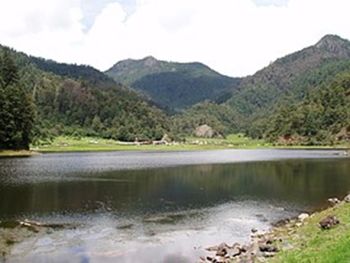
In 1928, Clausell and Dr. Atl gave classes in one of the Open-Air Painting Schools founded by the painter and muralist, Alfredo Ramos Martinez. They took their students to rural locations such as Xochimilco and Azcapotzalco where they learned to paint en plein air.
In 1930 the artist was invited by its director, Dr. Atl, to serve as an art teacher at an outdoor school ("escuelas al aire libre" - "free and open art classes") in Iztacalco. Clausell was fully committed to this project but on November 28, 1935 his life ended abruptly when he fell following a mudslide in the Zempoala Lagoon in Cuernavaca and was drowned/suffocated. He was aged 69.
The Legacy of Joaquín Clausell
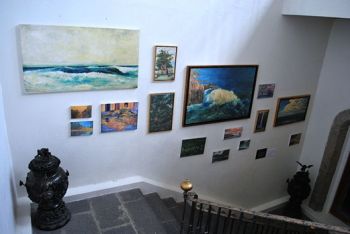
While the country has produced other notable landscape artists, Clausell's work is distinctive for the way he used European Impressionist techniques to represent the topography of Mexico. His approach contrasted with the work of artists such as José María Velasco, who focused mostly on panoramic scenes such as the Valley of Mexico. Clausell effectively diversified the representation of the Mexican landscape, depicting mountains, forests, rivers, lagoons, waterfalls, cliffs, and coastlines from every corner of Mexico; from Xochimilco to Mazatlán. His work is unique for his experimental use of vibrant color and non-naturalistic hues. This experimental use of color can also be seen in the work of his friend, Gerardo Murillo - aka Dr. Atl - with whom he exchanged many ideas.
Clausell's style went against the post-revolutionary Mexican Muralists, who were actively promoted by the state, in favor of representing Mexican national identity through the diversity of its landscape. His work was celebrated by many well-known figures of the time, including Diego Rivera and Dr. Atl. He is today recognized as the most important of the Mexican Impressionists and, since 1993, Mexico's National Council of Culture and Arts, and the Ministry of Culture of the State of Campeche, has sponsored a juried event entitled "Bienal de Pintura Joaquin Clausell" in the artist's memory.
Influences and Connections

-
![Camille Pissarro]() Camille Pissarro
Camille Pissarro -
![Claude Monet]() Claude Monet
Claude Monet -
![Diego Rivera]() Diego Rivera
Diego Rivera ![Gerardo Murillo]() Gerardo Murillo
Gerardo Murillo- Alfredo Ramos Martinez
-
![Camille Pissarro]() Camille Pissarro
Camille Pissarro -
![Claude Monet]() Claude Monet
Claude Monet -
![Diego Rivera]() Diego Rivera
Diego Rivera ![Gerardo Murillo]() Gerardo Murillo
Gerardo Murillo- Alfredo Ramos Martinez
Useful Resources on Joaquín Clausell
- Joaquín Clausell: Una introducción al estudio de su obra (In Spanish)Our PickBy Xavier Moysén
- Hidden Nostalgias: Anecdotes of Joaquin Clausell's LifeBy Patricia Clausell
- Los exilios de Joaquín Clausell (In Spanish)By Antoni Saborit
 Ask The Art Story AI
Ask The Art Story AI